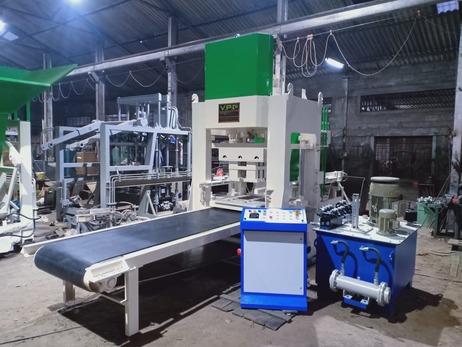Concrete Mixer Lifespan: How Long Should Yours Last?
When investing in a concrete mixer—whether it’s a self-loading mixer, traditional drum mixer, or batching plant—understanding its expected lifespan is just as important as knowing its cost.
For engineers, project managers, and specifiers, the longevity of a concrete mixer directly impacts budgeting, maintenance planning, and overall project efficiency.
So, how long should your concrete mixer last? Let’s break it down.
Average Lifespan of Concrete Mixers by Type
| Concrete Mixer Type | Average Lifespan |
|---|---|
| Self-Loading Concrete Mixer | 8 to 12 years (with regular maintenance) |
| Traditional Drum Mixer | 5 to 8 years |
| Batching Plant Mixer | 10 to 15 years |
| Portable Mixer (Small) | 3 to 5 years |
Note: Lifespan can vary based on usage intensity, site conditions, and maintenance frequency.
What Impacts Concrete Mixer Lifespan?
Several real-world factors determine whether your mixer will last its full service life—or wear out sooner.
- Usage Frequency: Mixers used continuously in high-volume operations tend to wear out faster than those used intermittently.
- Operating Environment: Harsh, dusty, muddy, or highly humid site conditions can accelerate mechanical wear and corrosion.
- Loading Practices: Overloading and improper material ratios put excessive stress on the mixer’s drum, motor, and structural components.
- Type and Quality of Materials Used: Using coarse, oversized aggregates or poor-quality materials can cause internal drum abrasion and strain.
- Operator Handling: Rough operation, incorrect sequences, and unskilled use can shorten service life.
- Design and Build Quality: Mixers built with low-grade materials or thin drum walls typically wear faster than those made for heavy-duty use.
- Machine Type and Complexity: Self-loading mixers, designed for rugged, all-in-one operation, often last longer than portable/manual mixers.
- Site Terrain: Movement across uneven, rocky ground increases stress on chassis, wheels, and drive components—especially for mobile mixers.
- Climate Exposure: Constant exposure to rain, salt air, or extreme temperatures degrades the body, hydraulics, and electrical systems faster.
9 Signs Your Concrete Mixer Might Be Wearing Out
- Frequent breakdowns despite maintenance.
- Rising repair costs over time.
- Uneven or poor-quality concrete batches
- Reduction in mixing speed and batch volume
- Excessive rust or drum damage
- Slower mixing cycles than when new
- Oil leaks or hydraulic fluid loss (in self-loading mixers)
- Poor handling or delayed control response
- Loose, noisy, or shaking components during operation
How to Extend the Life of Your Concrete Mixer
- Follow Load Limits: Overloading wears parts faster than you might think.
- Clean After Every Shift: Hardened concrete can cause long-term drum damage.
- Stick to the Maintenance & Lubrication Schedule: Small issues grow quickly if left unchecked.
- Train Your Operators: Careful use can add years to your mixer’s life.
- Use Quality Materials: Poor-quality aggregates can cause internal abrasion.
Pro Tip: A self-loading mixer generally lasts longer because of its design and automated control systems, which prevent many manual errors that shorten equipment life.
For detailed maintenance tips, check out our blog on Common Issues and Maintenance Tips for Concrete Mixer Machines.
Self-Loading vs Traditional Mixers: Which One Lasts Longer?
In most cases, self-loading mixers have the edge on lifespan. They’re built for heavy-duty use and often come with:
- Automated batching that reduces overloading
- Enclosed systems that protect working parts
- Better mobility, reducing wear from site transfers
Traditional mixers can still last well with proper care, but they tend to face more wear from manual loading and less controlled operation.
👉 If you’re still comparing mixer types, check out our detailed guide here: Manual vs Automatic Concrete Mixers – Which is Better?
Final Word
Concrete mixers aren’t disposable tools—they’re long-term assets. But how long they last depends just as much on how you use and maintain them as it does on the mixer type itself.
When planning equipment purchases, consider:
- The expected lifespan
- The service support available
- How easily you can find replacement parts
If you’re not sure what to expect from your current mixer—or what kind of concrete mixer machine you should plan for on your next project—we can help.
👉 Reach out to our technical team here — we’re happy to offer practical advice based on your project scale, usage, and site conditions.
👉 Explore our full range of self-loading mixers here
FAQ’s:
Q1: How many years does a concrete mixer typically last?
Concrete mixers typically last 5 to 15 years, depending on the type, usage, and maintenance practices.
Q2: What is the lifespan of a self-loading concrete mixer?
A self-loading concrete mixer can last 8 to 12 years with proper maintenance and correct usage.
Q3: How can I extend the life of my concrete mixer?
You can extend your mixer’s life by following load limits, cleaning daily, scheduling regular maintenance, and using skilled operators.
Q4: When should I replace my concrete mixer?
It may be time to replace your mixer if you face frequent breakdowns, rising repair costs, poor mixing quality, or visible drum damage.





 +918807310000
+918807310000

